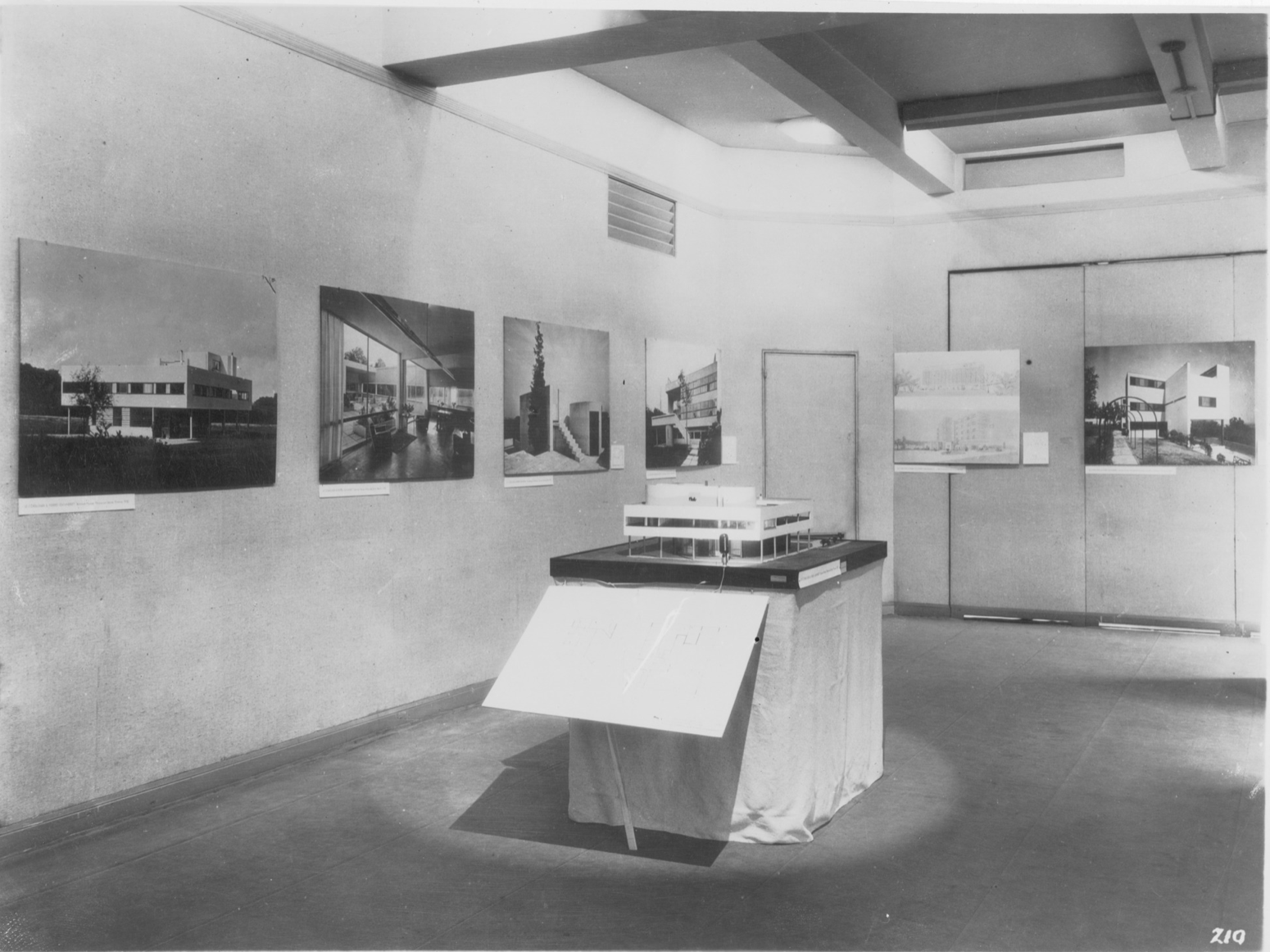This week we talked about the International Style of architecture which was made popular through an exhibition held at the Museum of Modern Art in spring of 1932. The exhibition was curated by Henry-Russell Hitchcock and Philip Johnson and displayed works by architects like Le Corbusier, Walter Gropius, Mies van der Rohe and Frank Lloyd Wright. Our readings for this week were about this exhibit and movement within architecture and it was very interesting to learn about. I find homes in this style of architecture very appealing with their geometric forms and spaces. I had never thought about it until now but I realized I have always been drawn to this style of architecture that lacks ornamentation. As I am an interior design major I hadn’t thought about ornamentation on the exterior of buildings much before taking this course. When we first started talking about ornamentation earlier in the semester I didn’t have much of an opinion on it other than I wasn’t in love with it but didn’t hate it. I was quite neutral on the topic. Now that we have explored more styles and movements I have more of a stance on ornament in architecture. I do not love ornamentation in architecture as I am more of a modernist. When I see modern buildings and structures my heart sings. Whereas, when I see buildings covered in ornament I have an appreciation for the craftsmanship and design but it isn’t a style I would design. Although this may seem like a small conclusion, it is quite important to me because I am slowly learning more and more about my design aesthetic and what speaks to me. I have found this course difficult because it is all so new to me and feels like a different language at times. Coming to conclusions like this one shows me how much I have learned so far and helps me understand buildings and spaces much more deeply.
The photo I chose this week is one from the exhibition at MoMA in 1932 that displays International Architecture because that was a turning point for this modernist style.
Reading Week 9 Questions
John Entenza, “Brief for the Case Study Houses“, (January 1945); Charles and Ray Eames, Eero Saarinen and Buckminster Fuller “What is a House?“ Arts and Architecture, March 1945.
- How do the photos of Eames’ case study house on the 6th and 9th pages make you feel? Do they evoke any emotion in you?
- Do you think Charles Eames’ case study house is successful in presenting an attitude towards living rather than a fixed architectural pattern?
Esther McCoy, “Arts & Architecture Case Study Houses”, Perspecta, Volume 15, (Backgrounds for an American Architecture), 1975.
- The article stated that, “architects who matured in the 30’s were dedicated to the ideal of architecture as a social art,” do you think that architects are dedicated to this ideal today?
- If there was a case study project created today and you could be the designer of one what would you create?
Betty Freidan, “The Problem That Has No Name” and “Housewifery Expands to Fill the Time Available” in The Feminine Mystique, New York: W.W. Norton & Company, 2001, 15-32, 233-257.
- How do you think the design of homes was impacted by its use in the 15 years after World War II?
- Do you think the design of homes in this period helped or hindered the women struggling with the problem that has no name?
